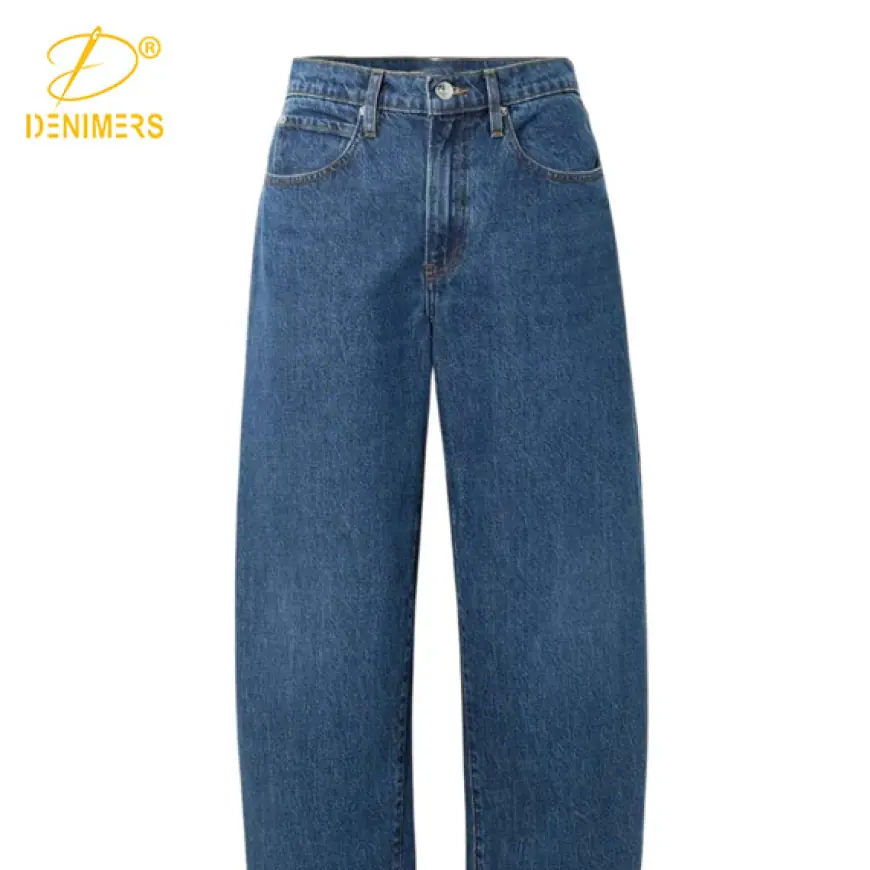How Are Women Denim Jeans Manufacturers Balancing Quality and Affordability?

Denim has for ages been a representation of style, durability, and the comfort of wearing it, consequently becoming a global wardrobe staple. In today's fast-paced fashion industry, the Women Denim Jeans Manufacturers are faced with the daunting task of maintaining high consumer satisfaction while keeping prices relatively low. They have to attain a balancing act between product quality and affordability, which requires an understanding of materials, designs, and market demands.
Durable, Fashionable Women’s Denim
The sturdiness of jeans depends on the fabrics used and how well they are constructed. In this respect, the tendency is for manufacturers to be investing the higher percentages of their resources in good-quality denim fabrics: those that resist wear and tear and last in appearance. With the latest stitching and washing processes, the aesthetic appeal and durability of the products are enhanced. For women denim manufacturers, however, it is more about creating fashionable designs in a way that would allow the designs to withstand numerous washings without the risk of color loss or structural integrity.
Men's Denim: The Call of Timelessness and Cost-Effectiveness
The women's denim scene attempts to chase and make way for trends and diversity in styles, whereas Men Denim Jeans Manufacturers seem to have a more unrelenting emphasis on timelessness and functionality. The manufacturers are aware that men do prefer jeans that can be worn in a wide variety of settings, from a casual outing to something that could be classified as semi-formal. To establish a firm balance of quality and affordability, many are now going for durable cotton blends and using sustainable production methods that cut back on wastage in fabrics. Here, affordability is not achieved by cutting back on quality but rather by improving efficiency so that men could buy jeans that are stylish, long-lasting, and still affordable.
Production Innovations to Keep Fair Prices
Technology is progressing by leaps and bounds to put denim manufacturers at the correct balance between quality and price. Automated cutting machines, digital fabric printing, and techniques of dyeing with water savings allow a higher degree of accuracy in production, with the added benefits of minimizing waste of materials and operational costs alike. The savings are ultimately passed on to the consumer. For women, these innovations mean more choices regarding fit and finish without a price hike, while for men, they mean further innovation in classic styles without compromise in quality or cost.
Targeting Youth Trends with Kids' Denim
Demand for cool and comfy jeans encompasses not only adults but also kids. Kids Jeans Manufacturers in India are bestowed with some of the toughest tasks in balancing quality and affordability. For the young ones, durability is much more relevant, as children are much more active, damaging their clothes within weeks. Oftentimes, manufacturers will use reinforced stitching, stretchable fabrics for comfort, and vibrant washes to appeal to a younger audience.
Global Trends - Balancing Between Quality and Price
The denim market is characterized by high competition, with manufacturers from all continents in competition for a piece of consumer attention. Global fashion trends influence how manufacturers in all segments-women, men, and kids-develop their products. For women denims, it means keeping pace with fluid trends like high-waisted fits, wide-leg cuts, and vintage washes without rendering the same awfully exorbitant. For men's and kids' jeans, it is about amalgamating functionality with some degree of contemporary design consideration while staying very much on the affordability side. Global sourcing, together with enhanced logistics and trade agreements, has allowed manufacturers to be able to offer competitive pricing, all without compromising fabric or stitching quality.
Wrapping It Up: Future of Quality and Affordability in Manufacturing
Down the line, denim manufacturers will be challenged to keep their innovation goals intact without raising the price tag. With the demand from consumers for sustainable, ethically produced jeans, investments are required in eco-friendly fabrics and production processes. Still, price sensitivity will remain a drawback for numerous buyers. Manufacturers of all denim types-women, men's, and kids'—will have to find out-of-box solutions like adopting circular fashion principles, recycling denim, and AI-driven design tools for making the production streamlined. In a fortunate intersection of these aforementioned dimensions, denim can remain a true fashion staple and a viable investment in the years ahead.
What's Your Reaction?
 Like
0
Like
0
 Dislike
0
Dislike
0
 Love
0
Love
0
 Funny
0
Funny
0
 Angry
0
Angry
0
 Sad
0
Sad
0
 Wow
0
Wow
0

















































